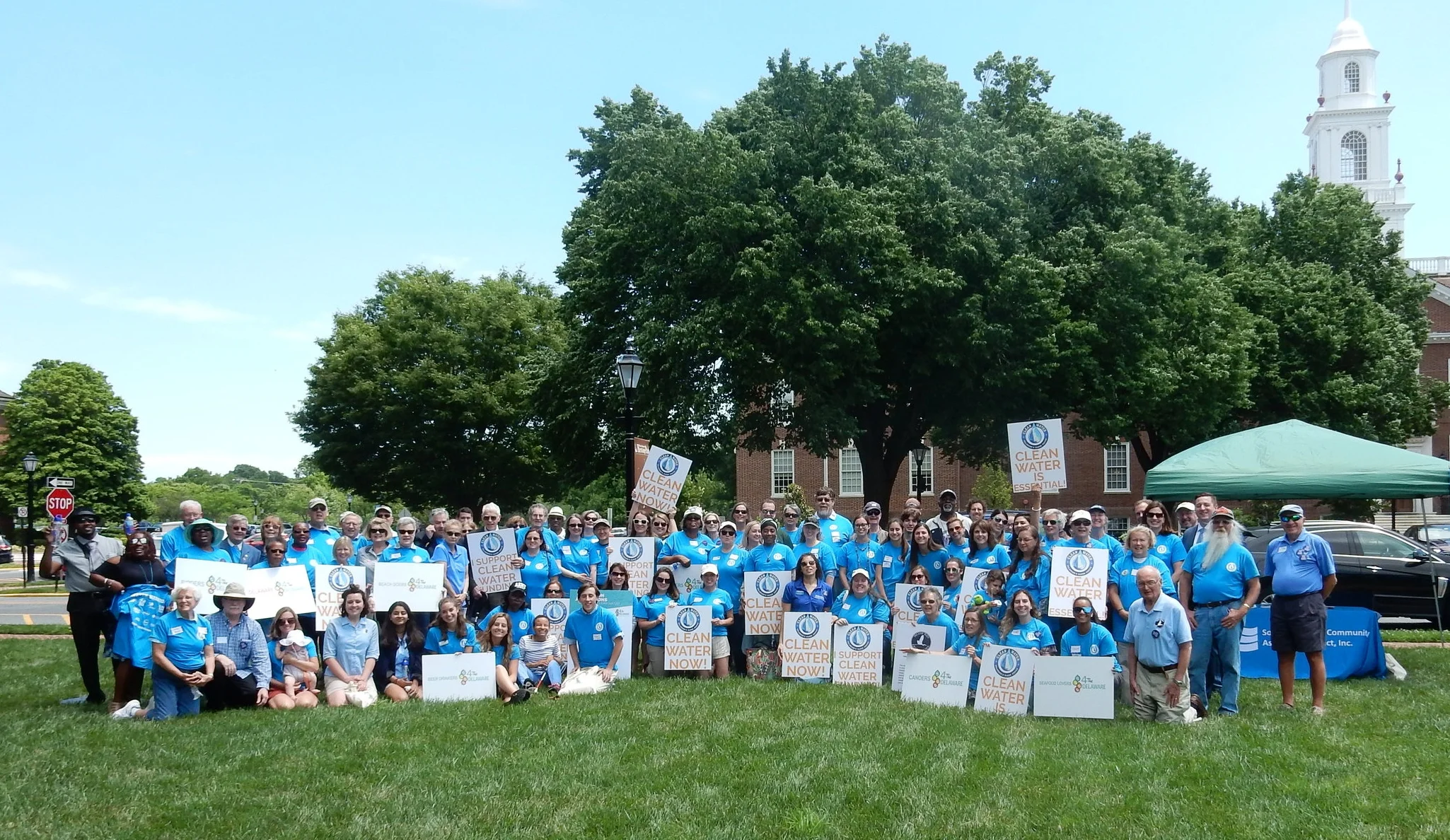Clean Water for Delaware: A Collaborative Approach
By Laura Miller, Outreach Coordinator, Delaware Nature Society
June 2018 Clean Water Rally in Wilmington, DE
Water shapes the State of Delaware. From the bustling city-scape of Wilmington to the quaint store fronts of Bethany Beach; the headwaters of Nanticoke to the Delaware Bay, water plays an important role in Delaware’s economy, health, and environment. The second smallest state is home to 25 miles of coastline, 500 square miles of wetlands, 540 square miles of bay, 2,900 acres of lakes and ponds, and 4,500 miles of rivers and streams. With a geography knitted together by waterways, Delaware’s waters provide $7 billion to the regional economy, 70,000 jobs, and $2 billion in wages. Why, then, is Delaware facing substantial water quality and flooding issues?
90 percent of our waterways in Delaware are considered polluted due to excess nutrients (like nitrogen and phosphorous) and legacy toxins. 100 miles of our waters have fish consumption advisories. One acre of precious wetlands is collectively lost in the Delaware region every day. With such startling figures looming overhead, Delaware still faces a $100 million deficit annually for projects that could bring our water quality up to state and federal standards.
Clean Water: Delaware’s Clear Choice Campaign (The Clean Water Campaign) is addressing that deficit by educating Delawareans on their role in improving water quality through at home practices and advocating for increased funding to elected officials.
Within the first year of the Clean Water Campaign, the Clean Water and Flood Abatement Task Force was created to investigate the causes of water quality problems and recommend potential funding mechanisms the state could employ. The Task Force was comprised of business, environmental, and academic leaders. After two years of research, the Task Force published its findings and recommendations in its final report. The report included draft legislation that became the Clean Water for Delaware Act (HB 270), which outlined a sliding scale income tax and business license fee. HB 270 was introduced and heard by the House Natural Resources Committee where, despite great public support, the bill was tabled to iron out the details for a funding structure.
Although our legislation was prevented from moving forward, legislators and Governor John Carney showed supporters that their voices did not go unheard. In the budget for Fiscal Year 2019 (July 2018 – June 2019), $10 million was included for clean water projects -- the most funding clean water initiatives have received in decades. This was in addition to fully funding both the Open Space and Farmland Preservation Programs at $10 million apiece for a total of 30 million conservation dollars in Delaware’s budget! We are celebrating this success and will use it as motivation to continue advocating for dedicated and sustainable clean water funding.
Delaware is not alone in this fight. States across the country, and in the Delaware River Watershed, are struggling to find sustainable funding mechanisms to address increasing threats to clean water. And, with water knowing no boundaries, we recognize we must take a regional approach to fund failing infrastructure, abate flooding, and protect wildlife habitat. Nowhere is this more evident than in Delaware. The most “down river” state in the Delaware River Watershed, we understand the importance of working with our neighbors.
Organizations like Delaware Nature Society and alliances like our Clean Water Campaign rely on regional coalitions such as the Coalition for the Delaware River Watershed to expand our efforts beyond the state line and leverage the collective knowledge and skills of our neighbors to meet our shared common goal of an even better Delaware River Watershed for our future generations. On both the state and federal level, now is the time for more sustainable clean water funding.



